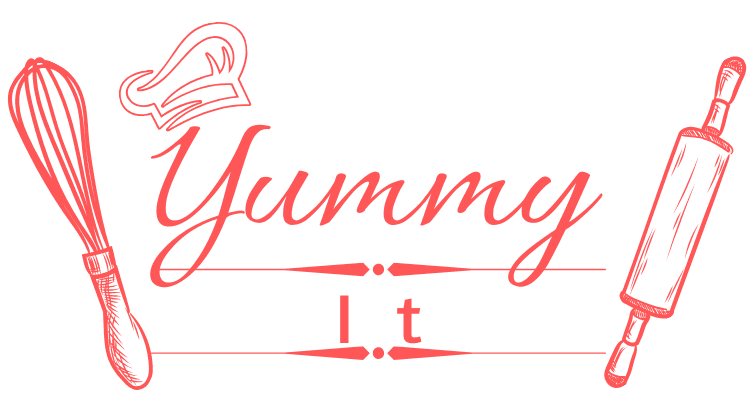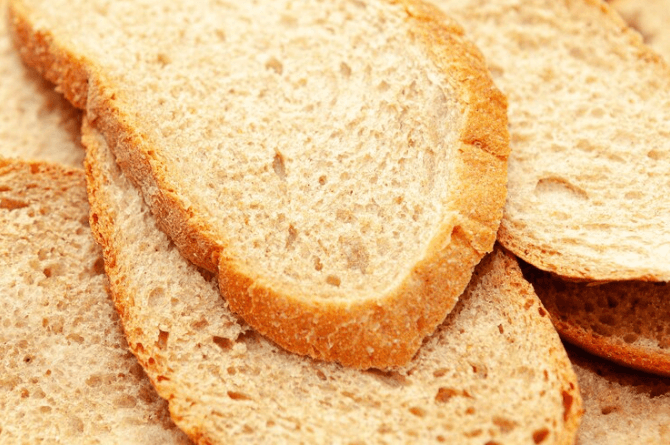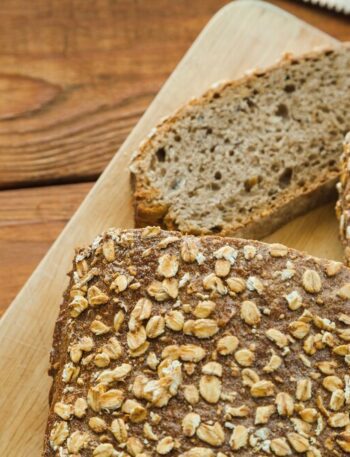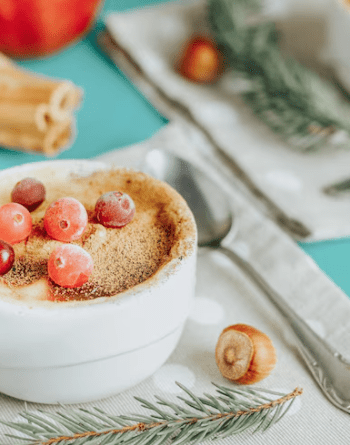A well-made Sandwich Bread Recipe can transform your breakfast from ordinary to exceptional. Whether you enjoy it as toast, in a breakfast sandwich, or topped with avocado, homemade sandwich bread offers a versatility that’s hard to beat. With just a few ingredients and simple steps, you can make your own bread that is fresher, healthier, and tastier than store-bought versions. If you’re curious about perfecting your sandwich bread, check out King Arthur Baking’s Classic Sandwich Bread Recipe for a trusted guide.
Sandwich Bread Recipe is a staple in many households, especially for breakfast. Whether it’s a quick avocado toast or a comforting slice of French toast, a quality loaf makes all the difference. For a straightforward, tried-and-tested recipe, take a look at Sally’s Baking Addiction: Simply Sandwich Bread.
History and Evolution of Sandwich Bread
Sandwich bread has a fascinating history that dates back centuries. The idea of soft, sliceable bread has been around for hundreds of years, but the modern sandwich bread we know today became popular in the early 20th century. Thanks to technological advancements in milling and baking, bread became softer, more uniform, and easier to use in sandwiches—making it an instant breakfast favorite.
Throughout history, different cultures have developed their versions of sandwich bread, adapting ingredients and methods based on local preferences and available resources. For instance, the French have pain de mie, a soft bread used for sandwiches, while the Japanese have shokupan, a slightly sweeter, milk-based bread. Today, sandwich bread is a universal staple, with countless variations tailored to diverse tastes and dietary needs.
Nutritional Benefits of Homemade Sandwich Bread
1. No Preservatives:
Unlike store-bought bread, homemade Sandwich Bread Recipe contains no artificial preservatives, making it a healthier option for you and your family. Most commercially produced bread is laden with preservatives to prolong its shelf life, which may not be beneficial for your health in the long run.
2. Control Over Ingredients:
By making your own bread, you have complete control over the ingredients. You can use healthier flours like whole wheat or spelt, reduce the sugar, or even add beneficial add-ons like flaxseeds or chia seeds. This customization allows you to cater to specific dietary needs, such as reducing sodium or increasing fiber.
3. Freshness and Taste:
Nothing beats the taste of freshly baked bread. Homemade bread is always fresher and has a superior flavor, enhancing every breakfast dish. Unlike store-bought bread, which may contain stabilizers and additives to extend shelf life, homemade bread ensures you’re consuming a more natural product.
4. Rich in Nutrients:
By using whole wheat flour or adding seeds and nuts, you can boost the nutritional content of your bread, making it a source of essential vitamins and minerals, including fiber, protein, and B vitamins. These nutrients help support overall health, including digestion and energy levels.
Essential Ingredients for Perfect Sandwich Bread
1. Flour:
Use all-purpose or bread flour for a good structure. The protein content in bread flour provides the strength and chewiness that is ideal for sandwich bread. For a softer loaf, you can combine bread flour with a portion of all-purpose flour.
2. Yeast:
Yeast is the leavening agent that makes the bread rise, creating a soft, airytexture. Active dry yeast or instant yeast works best, but you can also use fresh yeast for a more artisanal flavor. Instant yeast can be added directly to the flour, whereas active dry yeast should be dissolved in warm water first.
3. Water or Milk:
Provides the moisture needed for the dough. Using milk instead of water adds richness and makes the bread softer, while water creates a chewier texture. You can also use non-dairy milk, such as almond or oat milk, for a vegan version.
4. Salt:
Salt is essential in baking as it enhances the flavor and controls the fermentation process, ensuring the dough rises evenly. Reducing the salt will make the bread rise faster, but it may lead to less flavor.
5. Sugar:
Sugar helps feed the yeast, contributing to a good rise, and adds a subtle sweetness. Alternatives like honey or agave syrup can be used for a different flavor profile.
6. Butter or Oil:
Adding butter or oil to the dough contributes to tenderness and improves texture. This fat makes the bread softer, more flavorful, and easier to slice. You can use olive oil or coconut oil for different flavor profiles or to suit dietary needs.
Step-by-Step Guide to Making Sandwich Bread
1. Mixing the Dough:
- Combine flour, yeast, salt, and sugar in a large mixing bowl.
- Add warm water or milk, and mix until the dough comes together.
- Knead the dough for about 10 minutes until it becomes smooth and elastic. Kneading develops the gluten, which gives the bread its signature structure.
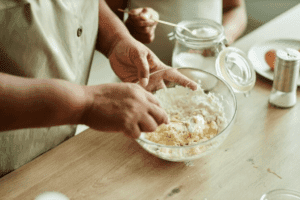
2. First Rise:
- Place the dough in a greased bowl, cover it with a damp cloth or plastic wrap,and let it rise for about 1-2 hours or until it doubles in size. Proofing allows the yeast to ferment, which creates air pockets that give the bread its light texture.
3. Shaping the Dough:
- Punch down the risen dough to release excess air. This step helps create a more uniform crumb.
- Shape it into a loaf and place it in a greased loaf pan, making sure the dough is evenly distributed.
4. Second Rise:
- Let the shaped dough rise again for about 30-45 minutes or until it reaches the top of the loaf pan. The second rise ensures the bread will be light and fluffy once baked.
5. Baking:
- Preheat your oven to 350°F (175°C).
- Bake the bread for 30-35 minutes, or until it sounds hollow when tapped. For an extra golden crust, brush the top with melted butter before baking.
Common Mistakes to Avoid When Baking Sandwich Bread
- Using the Wrong Flour: Using cake flour or pastry flour will result in a loaf that is too soft and lacks structure.
- Over-Proofing: Letting the dough rise too long can cause it to collapse during baking, resulting in a dense loaf.
- Under-Kneading: Insufficient kneading leads to poor gluten development, resulting in a dense and heavy loaf.
- Incorrect Water Temperature: Water that is too hot can kill the yeast, while water that is too cold will not activate the yeast properly. The ideal temperature is between 105°F and 110°F.
Variations of Sandwich Bread Recipes
1. Whole Wheat Sandwich Bread:
Substituting half of the all-purpose flour with whole wheat flour creates a healthier loaf rich in fiber and additional nutrients. Whole wheat flour contains the entire grain, including the bran, germ, and endosperm, which provides more vitamins and minerals compared to refined flour. This type of bread has a more robust flavor, slightly nutty, and a denser texture, which makes it perfect for those looking to add more fiber to their diet without compromising the deliciousness of sandwich bread.
To enhance the flavor and nutrition of whole wheat Sandwich Bread Recipe, consider adding a tablespoon of honey or molasses. This not only adds a subtle sweetness to balance the earthiness of the wheat but also helps keep the bread moist for longer periods. You can also sprinkle some rolled oats on top before baking for an attractive and rustic look. Whole wheat bread pairs exceptionally well with savory toppings like avocado, hummus, or even roasted vegetables.
2. Multigrain Bread:
For those wanting a bread that’s not only delicious but also packed with nutrients, multigrain bread is an excellent choice. To make multigrain bread, add a variety of seeds and grains like flaxseed, sunflower seeds, chia seeds, sesame seeds, or even oats into the dough. Each of these ingredients brings a unique texture and contributes to the bread’s nutrient density. For example, flaxseeds are rich in omega-3 fatty acids, while sunflower seeds are packed with healthy fats and vitamin E.
Multigrain bread is ideal for those who want a nutrient-dense breakfast that keeps them feeling full for longer. The added fiber and healthy fats contribute to better digestion and sustained energy levels throughout the morning. For extra flavor, you can toast the seeds before adding them to the dough—this step brings out their nutty aromas and enhances the taste. Multigrain bread is perfect for making hearty sandwiches or open-faced toasts with toppings like smoked salmon and cream cheese.
3. Gluten-Free Sandwich Bread:
For those with gluten sensitivities or Celiac disease, making gluten-free sandwich bread at home can be a game changer. Using a gluten-free flour blend is essential, as it typically combines different flours like rice flour, almondflour, tapioca starch, and sometimes potato starch. This blend helps mimic the structure of wheat flour while still being safe for those who need to avoid gluten.
To achieve the traditional chewy texture of sandwich bread, adding xanthan gum or guar gum is important. These ingredients act as a binder and add elasticity to the dough, which gluten normally provides. Without them, gluten-free bread can be crumbly and fall apart easily. Another tip is to add an extra egg or even Greek yogurt to the dough—these ingredients add moisture, structure, and extra protein to improve the overall texture of the bread.
For a flavorful twist, consider adding herbs like rosemary or thyme, or even roasted garlic to the gluten-free dough. These additions elevate the bread, making it a fantastic base for a gourmet sandwich or toast topped with simple ingredients like butter and honey. Gluten-free bread does have a shorter shelf life compared to traditional bread, so it’s best to slice and freeze it for convenience.
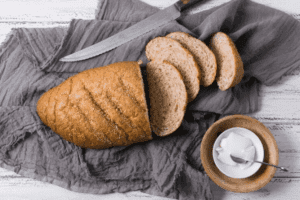
4. Sourdough Sandwich Bread:
Another variation to explore is sourdough sandwich bread, which uses a natural sourdough starter instead of commercial yeast. Sourdough bread is not only delicious with its characteristic tangy flavor, but it’s also easier to digest due to the fermentation process, which helps break down the gluten and increases the availability of nutrients.
Making sourdough sandwich bread does require a bit more patience and planning, as the fermentation process takes time. However, the benefits are worth it—sourdough has a delightful crust and soft crumb, and it stays fresh longer due to the natural acidity from the fermentation. Sourdough sandwich bread makes an ideal choice for breakfast sandwiches, especially when toasted lightly and paired with fried eggs and sautéed spinach.
5. Milk Bread (Shokupan):
Milk bread, also known as Shokupan in Japan, is a popular variation that results in an incredibly soft and fluffy loaf, perfect for making sandwiches. This bread incorporates a milk-based roux called Tangzhong, which involves cooking a small portion of the flour with water or milk before adding it to the dough. The Tangzhong technique helps the bread retain moisture, creating a soft texture that stays fresh longer.
The addition of whole milk, butter, and a bit of sugar makes this bread richer compared to classic sandwich bread. The result is a slightly sweet, pillowy loaf that’s perfect for toast with jam, breakfast sandwiches, or even a simple buttered slice with a hot beverage. Milk bread is especially popular for making katsu sandwiches, which involve breaded, fried cutlets, but it’s versatile enough for almost any type of filling or topping.
6. Herb and Garlic Sandwich Bread:
Adding herbs and garlic to your sandwich bread dough is a simple way to elevate its flavor profile. Finely chopped rosemary, thyme, oregano, or basil can be mixed into the dough along with minced garlic or garlic powder. This herb-infused bread is perfect for making savory breakfast dishes, like egg sandwiches or toasted slices topped with cheese and sliced tomatoes.
You can also brush the top of the dough with a mixture of olive oil, minced garlic, and parsley before baking to create a flavorful crust. Herb and garlic bread pairs wonderfully with scrambled eggs or as a base for breakfast bruschetta topped with fresh tomatoes, mozzarella, and a drizzle of balsamic glaze.
7. Sweet Sandwich Bread:
For a slightly sweet variation of sandwich bread, you can add ingredients like cinnamon, raisins, or honey. Sweet sandwich bread is perfect for making French toast or peanut butter and banana sandwiches. Adding a teaspoon of cinnamon and a handful of raisins during the mixing process creates a deliciously fragrant loaf with bursts of sweetness throughout.
This type of Sandwich Bread Recipe can also be brushed with melted butter and sprinkled with cinnamon sugar before baking to create a slightly crunchy and flavorful crust. Sweet sandwich bread is a great option for those who love having a sweet breakfast without needing to add too much sugar after baking. Try using it to make cream cheese-stuffed French toast for a decadent weekend breakfast.
Incorporating It into Breakfast Recipes
1. French Toast:
Dip slices of sandwich bread in a mixture of eggs, milk, and a touch of cinnamon, then cook in a skillet until golden brown. French toast is a classic that allows you to enjoy bread in a sweet, comforting way.
2. Breakfast Sandwich:
Use your bread to create a classic breakfast sandwich with scrambled eggs, cheese, and bacon. This protein-packed option keeps you full throughout the morning and pairs well with Coffee Loophole Recipe.
3. Avocado Toast:
Spread mashed avocado on toasted sandwich bread, sprinkle with salt, and add adrizzle of olive oil. You can add a poached egg or smoked salmon for extra protein and richness.
Advanced Techniques
1. Tangzhong Method:
The Tangzhong method involves cooking a portion of the flour and water before adding it to the dough. This technique makes the bread softer and helps it stay fresh longer. The Tangzhong is particularly useful if you want your bread to remain moist and soft for several days.
2. Adding Mix-Ins:
Incorporate herbs, garlic, or cheese into the dough for extra flavor. Adding rosemary or cheddar cheese can make the bread versatile enough for both breakfast and lunch sandwiches.
Storing and Preserving It At Home
- Room Temperature: Store the bread in an airtight container for up to 4 days. Ensure the bread is completely cool before storing to prevent condensation, which can make the bread soggy.
- Freezing: Wrap in plastic wrap and foil before freezing. It can stay frozen for up to 3 months. Slice the bread before freezing to make it easy to take out what you need.
- Thawing: Let the bread thaw at room temperature before use, or toast slices directly from the freezer. Toasting directly from frozen helps maintain the bread’s texture.
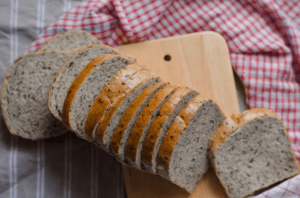
Pairing It with Breakfast Beverages
1. Coffee:
A slice of toast pairs perfectly with a cup of coffee, particularly when topped with butter or jam. Try pairing it with the Coffee Loophole Recipe for a flavorful experience.
2. Tea:
For a lighter breakfast, pair your bread with a soothing cup of herbal tea. Teas like green tea or chamomile complement the subtle flavors of freshly baked bread.
3. Juice:
A glass of freshly squeezed orange juice adds a burst of vitamins to your morning, perfectly complementing your breakfast sandwich.
FAQs About Sandwich Bread Recipe
1. What is the Difference Between Sandwich Bread and Regular Bread?
Sandwich bread has a soft, fine crumb and a rectangular shape, making it perfect for easy slicing and holding fillings. It’s lighter and softer compared to regular bread, which may be denser and vary in texture.
2. Is it Cheaper to Make Your Own Sandwich Bread?
Yes, making sandwich bread at home is generally cheaper. The ingredients are basic—flour, yeast, salt, and water—allowing you to save money in the long term, especially if you frequently eat bread.
3. What is the Best Bread to Use for a Sandwich?
The best bread for sandwiches depends on your choice of filling. Soft white or whole wheat bread is ideal for classic sandwiches, while multigrain or sourdough works better for heartier fillings.
4. What Makes Sandwich Bread Different?
Sandwich bread is uniquely soft, light, and rectangular. The shape and texture make it ideal for sandwiches, while added fats like butter make it more tender and long-lasting compared to other breads.
Conclusion
Homemade Sandwich Bread Recipe is a rewarding recipe that offers versatility, taste, and nutritional benefits, especially for breakfast. With a few simple ingredients, you can create a delicious loaf that will enhanceevery breakfast dish you make. Whether you’re making French toast, a breakfast sandwich, or simply enjoying a slice with butter, homemade sandwich bread provides a comforting start to your day. Don’t hesitate to experiment and add your own twist—after all, the joy of baking comes from making it uniquely yours.
